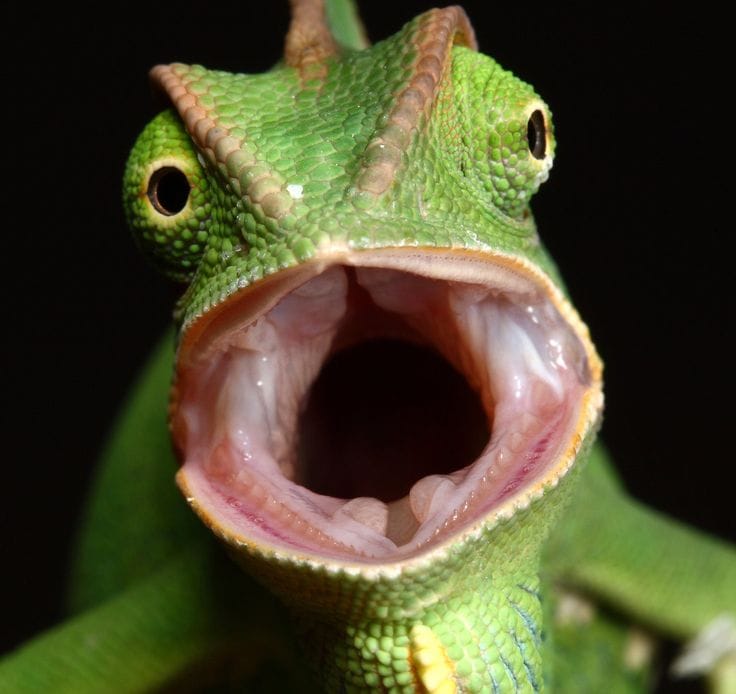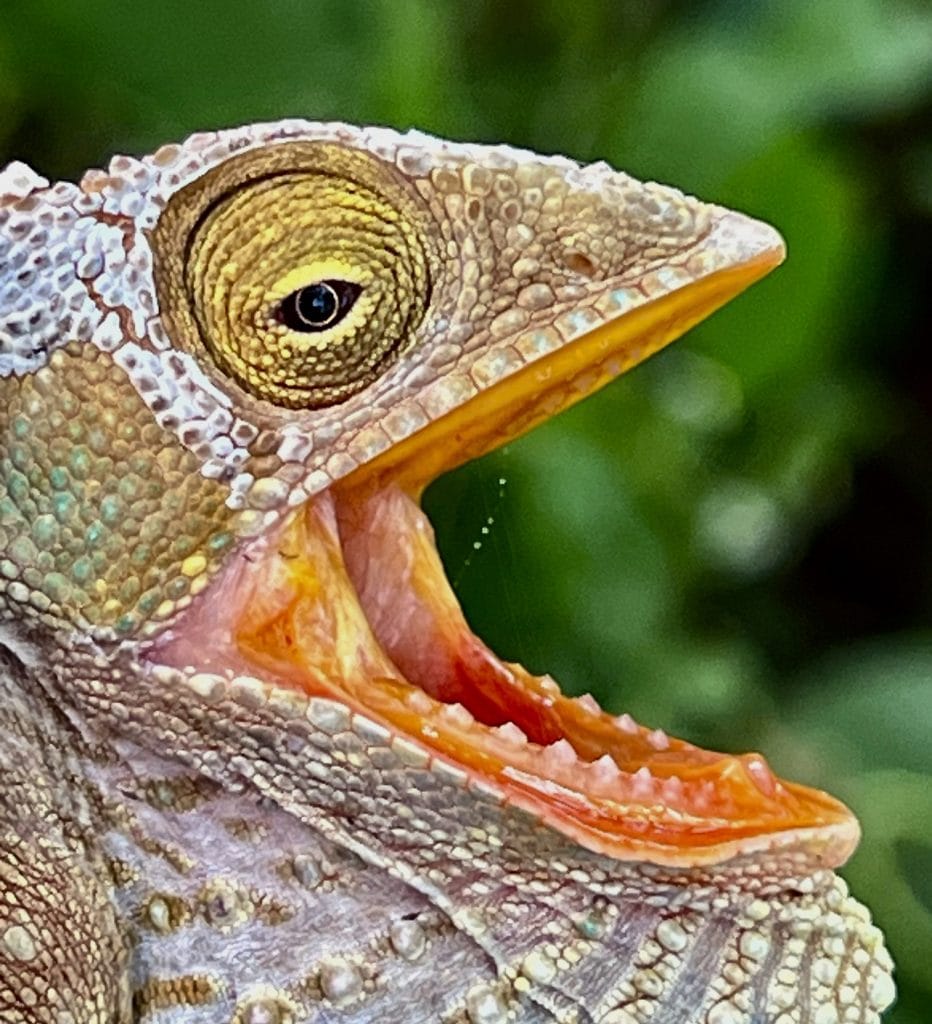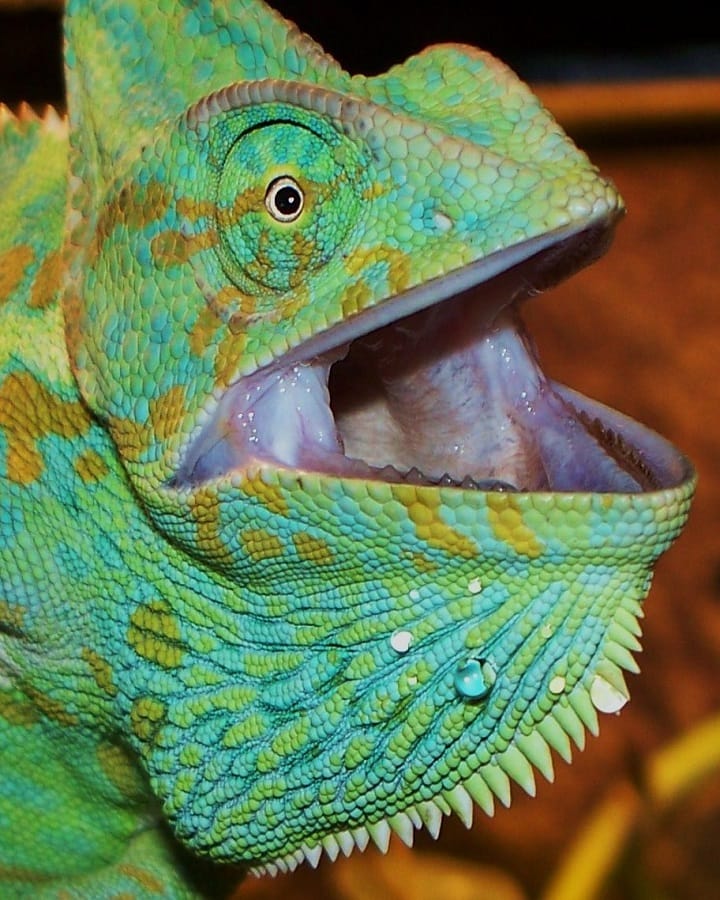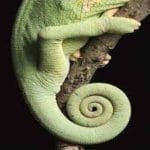
Image Credit- Hema
Chameleons are known for their color-changing skin and zippy tongues, but have you ever wondered about their teeth? Chameleon teeth are a fascinating and often overlooked feature of these unique reptiles. Unlike many other lizards, chameleons have tiny, sharp teeth that are fused to their jawbones—perfectly designed for gripping and crushing their insect prey. Whether you’re a reptile enthusiast or simply curious about how these incredible creatures eat, learning more about chameleon teeth reveals just how specially adapted they are for their insectivorous lifestyle.
Chameleons are fascinating reptiles known for their color-changing abilities and lightning-fast tongues. But beyond their flashy traits, there’s something less talked about yet equally interesting—their teeth. Yes, chameleon teeth play a crucial role in their survival, diet, and behavior. In this article, we dive deep into the structure, function, and unique features of chameleon teeth.
Chameleon Teeth: Perfect Guide

Do Chameleons Have Teeth?
Absolutely! Chameleons do have teeth, though they may not be immediately noticeable. Their teeth are small, sharp, and designed primarily for gripping and holding onto prey. Unlike mammals, chameleons don’t have different types of teeth (like molars or incisors); all of their teeth are relatively similar in shape.
Unique Structure of Chameleon Teeth
Chameleon teeth are acrodont, which means they are fused to the edge of the jawbone rather than being set into sockets. This fusion makes them sturdy, but it also means chameleons cannot regrow lost teeth. Their teeth are tiny but sharp—perfect for puncturing and holding onto fast-moving insects like crickets, grasshoppers, and flies.
What Do Chameleons Use Their Teeth For?
Chameleons primarily use their teeth to:
- Grip and hold prey once it’s caught by their sticky tongue.
- Break down exoskeletons of insects before swallowing.
- Occasionally defend themselves from threats or other animals.
Despite having teeth, chameleons rely more on their long tongues to capture prey, and their teeth act as secondary tools in the feeding process.
Can Chameleon Teeth Harm Humans?
Technically, chameleons can bite, especially if they feel threatened or stressed. However, their bite is generally harmless to humans. It might feel like a pinch, but it’s unlikely to break the skin or cause any injury. Still, it’s best to handle chameleons gently and respectfully to avoid stressing them out.
Interesting Facts About Chameleon Teeth
- Chameleons don’t chew their food like mammals; they crush and swallow.
- Because their teeth are fused, dental injuries are permanent.
- Baby chameleons are born with a full set of teeth, ready to hunt tiny prey from day one.
Chameleon teeth may not be the first thing people think about when it comes to these colorful reptiles, but they’re an essential part of what makes chameleons such effective hunters. Their acrodont teeth are perfectly suited for their insectivorous diet and reveal just how specialized these animals really are. If you enjoyed learning about chameleon teeth or have your own reptile facts to share, let us know in the comments below—we’d love to hear from you!
Frequently Asked Questions
Do chameleons have teeth?
Yes, chameleons have teeth! Their small, sharp teeth are fused to their jawbone and help them grip and chew their insect prey.
Can chameleon teeth bite humans?
While chameleons can bite, their teeth are not strong enough to seriously harm humans. A bite might feel like a pinch but is generally harmless.
How do chameleon teeth differ from other reptiles?
Chameleon teeth differ from other reptiles because they are acrodont—fused to the jawbone rather than set in sockets. Unlike many reptiles that can replace lost teeth, chameleons cannot regrow theirs. Their teeth are small, sharp, and specialized for gripping insect prey, rather than tearing or chewing like some other reptiles.







